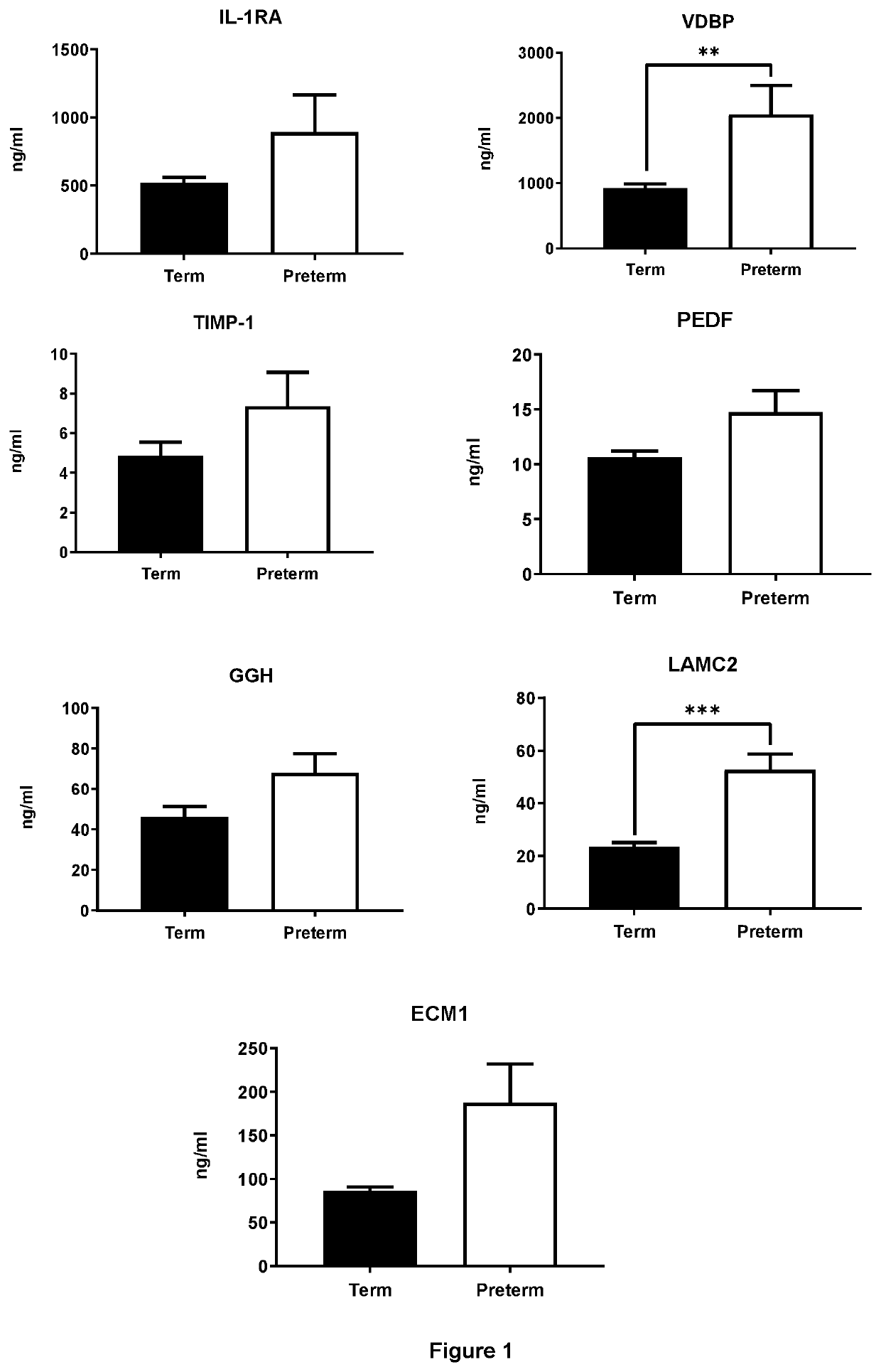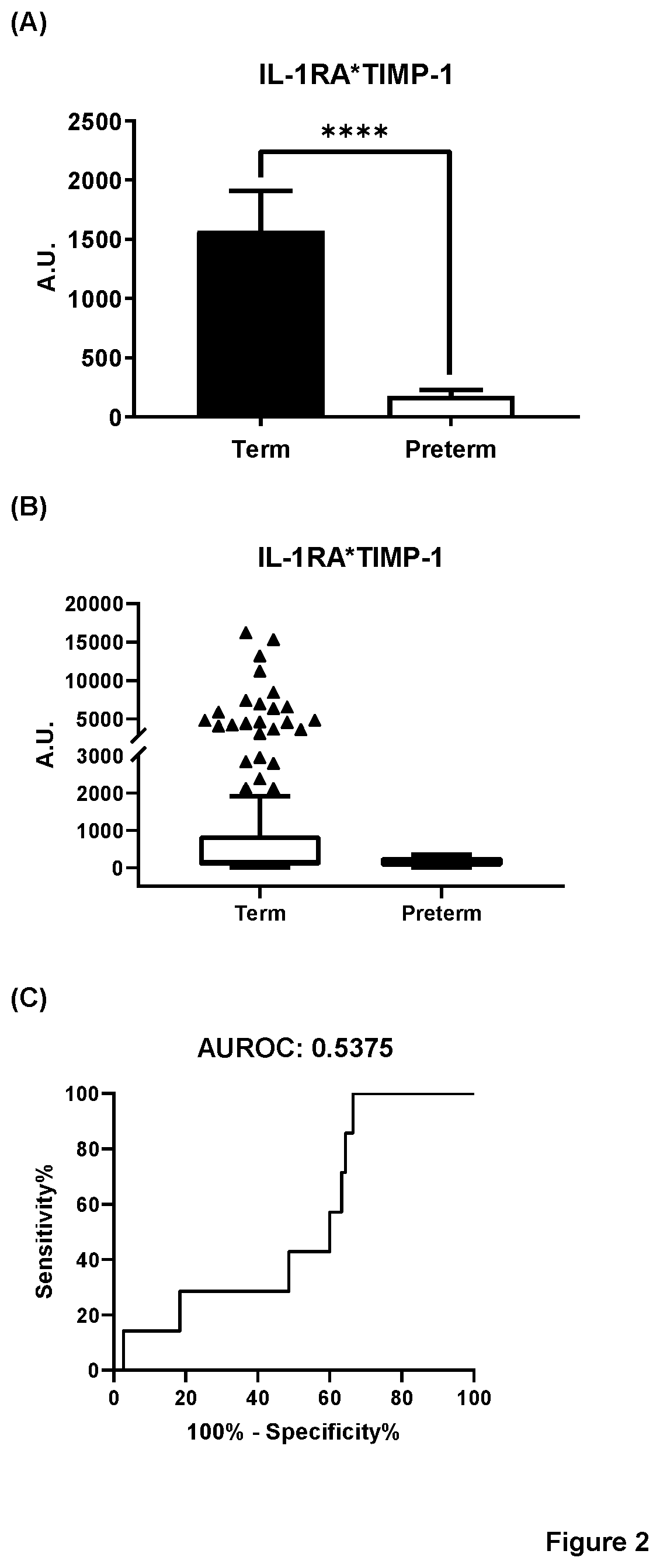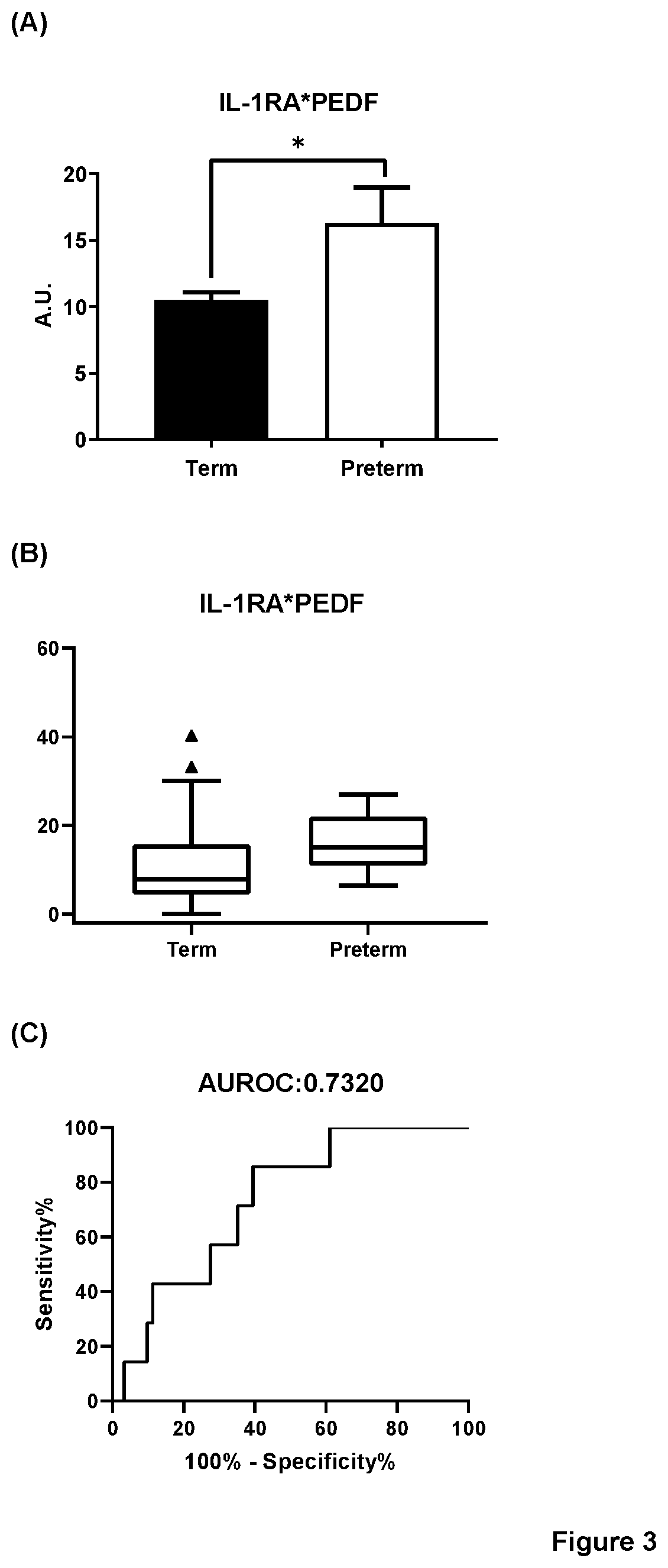Biomarker Pairs of Preterm Birth
a preterm birth and biomarker technology, applied in the field of biomarkers, can solve the problems of inability to initiate medical intervention for such cases, low correlation between treatment and outcome, and less conclusiveness, so as to prolong gestation and reduce the risk of preterm birth
- Summary
- Abstract
- Description
- Claims
- Application Information
AI Technical Summary
Benefits of technology
Problems solved by technology
Method used
Image
Examples
example 1
Example
[0254]This Example is an extract from an Example first appearing in PCT / EP2018 / 079639, and is provided herein for reference.
[0255]CVF (cervicovaginal fluid) samples were collected from pregnant women at 19-37 weeks of gestational age. A sterile bivalve speculum was inserted into patients' vagina. A dual-tipped swab was placed in the posterior fornix of the vagina for 30 seconds and then placed into 1 mL of chilled CVF extraction buffer (50 mM HEPES, 150 mM NaCl, 0.1% SDS, 1 mM EDTA, 1 mM Pefabloc SC 4-(2-aminoethyl)benzene sulfonyl fluoride (AEBSF)). Samples were vortexed for 10 s, after which the swab was inverted and was centrifuged for 5 min at 1000×g. The swab was discarded, and the sample tube was vortexed for 10 s before centrifugation at 1000×g for 5 min. The extracted CVF (supernatant) was aliquoted into tubes and stored at −80° C. until required.
[0256]Protein biomarkers were tested in the 200 CVF samples which were obtained from 86 patients who eventually had term an...
example 2
[0279]CVF (cervicovaginal fluid) samples were collected from pregnant women at 16-24 weeks of gestational age.
[0280]CVF samples are collected by research midwives from consenting pregnant women prior to any cervical examination or procedure. The cervix is visualized using a sterile speculum and a sterile double-tipped swab is inserted into the posterior vaginal fornix for 30 s. To extract the proteins from the CVF, both tips of the swab are placed into a 5 mL tube containing 1 mL of CVF extraction buffer (100 mM Tris, 150 mM NaCl, 1 mM EGTA, 1 mM EDTA, 0.1% Triton X-100, 1 mM Pefabloc SC 4-(2-aminoethyl)benzene sulfonyl fluoride (AEBSF)) followed by a brief vortex. The double-tipped end is inverted with the tube using sterile forceps and centrifuged at 1000×g for 5 mins at 4° C. The swab is removed and the sample briefly vortexed and centrifuged at 1000×g for 5 mins at 4° C., followed by aliquoting into 8 PCR tubes for storage at −80° C.
[0281]Individual biomarker levels were determi...
PUM
| Property | Measurement | Unit |
|---|---|---|
| cervical length | aaaaa | aaaaa |
| strength | aaaaa | aaaaa |
| concentration | aaaaa | aaaaa |
Abstract
Description
Claims
Application Information
 Login to View More
Login to View More - R&D
- Intellectual Property
- Life Sciences
- Materials
- Tech Scout
- Unparalleled Data Quality
- Higher Quality Content
- 60% Fewer Hallucinations
Browse by: Latest US Patents, China's latest patents, Technical Efficacy Thesaurus, Application Domain, Technology Topic, Popular Technical Reports.
© 2025 PatSnap. All rights reserved.Legal|Privacy policy|Modern Slavery Act Transparency Statement|Sitemap|About US| Contact US: help@patsnap.com



